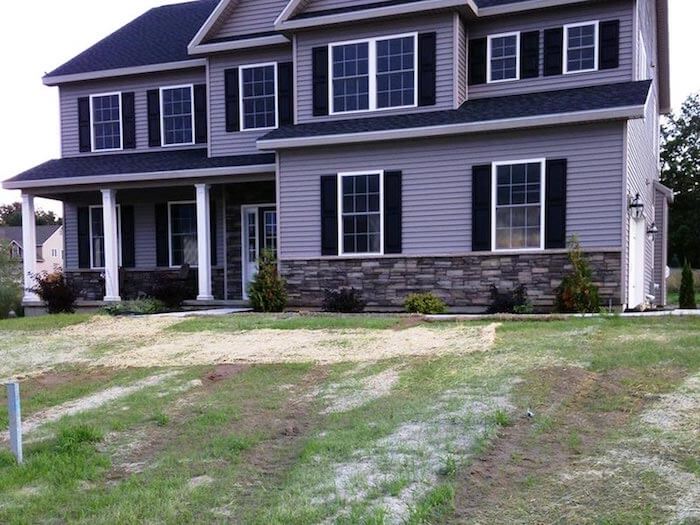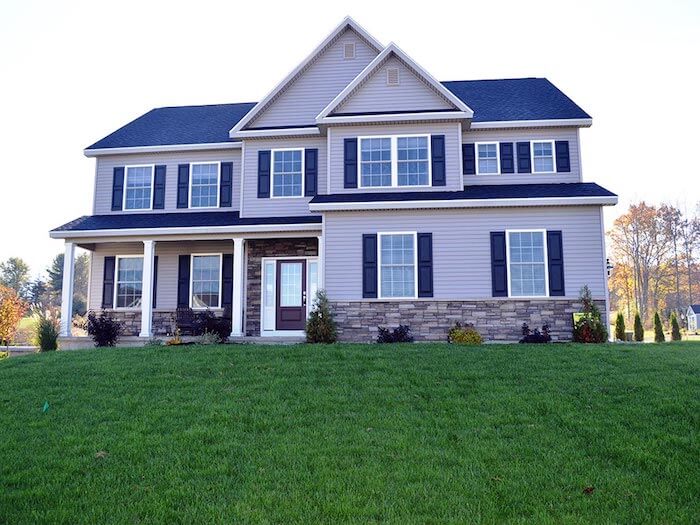If you’re reading this, then it’s likely you have a new lawn or you’re trying to improve the lawn you have. You could also be a landscaper, grounds manager, or golf course owner, or you just want your lawn to look better than your neighbor’s lawn! You have likely been presented with the age-old decision: sod or seed?
For A Better Looking Lawn with Fewer Weeds, Choose Sod Over Seed
There’s one common reason why people choose to plant grass seed instead of laying sod and that reason is cost. Sod may cost more initially when compared to seeding. However, sod may be the perfect option for you if you’re looking to save time, effort, and reduce maintenance costs down the road. Below, we outline the benefits of sod over grass seed. Keep reading to learn more.
Sod is one of the most environmentally responsible materials you can add to your home or business. Healthy turfgrass controls erosion, decreases runoff, restores soil quality, purifies air and groundwater, and converts carbon dioxide into oxygen. It also reduces dust and noise, adds visual appeal, and increases property values.
Benefits of Sod Over Seed
We know you take pride in how your lawn looks, and so do we. Below we’ll share the top five advantages of sod, and why it’s the best choice if you want a beautiful, lush lawn, in a day. So continue reading to find out how to make your neighbors green with envy (pun intended!).
1. Sod provides you with instant results
Many newly seeded lawns need up to 10 to 12 weeks before they’re ready for even light foot traffic. Weather also influences growing speeds. With sod, you don’t have to wait and spend years to nurture a newly seeded lawn to grow, while battling weeds and washouts. Enjoy your lush, green lawn immediately.
When sod is first installed, it’s not ready for normal lawn traffic, but it instantly looks like a finished lawn. Once sod roots establish, it’s ready for normal lawn traffic, including entertaining, play, and pets.
Another advantage to sod is that it can be installed anytime during the growing season, as long as the ground is not frozen, and you have sufficient water for establishment and maintenance. A newly seeded lawn needs one full growing season before it’s dense, mature, and established well enough to withstand vigorous lawn traffic. It also faces many more variables and risks, such as germination rate, rain wash-outs and weed competition.
2. Sod saves you time and effort
Seeding a lawn requires greater initial maintenance. For seeds to establish well, they must be sown during peak growth times for the grass involved. The optimum time in our area is August to mid-September. Watering is also critical during seed establishment. Careful monitoring and attention are essential in this phase.
Sod, however, is a mature, dense, weed-free and instant lawn. It will generally root in 2-3 weeks after it’s installed, with proper care. Seed or hydroseed will need your full attention for over a year to get similar results—provided it doesn’t wash out with the first rainstorm.
3. Sod offsets maintenance costs & saves you money
Did you know that failed seed or weak grass is susceptible to insects, weeds and disease? As you can probably guess, if this happens with your new lawn, not only will it take more of your time and effort to fix or start over, but this also leads to higher or unexpected maintenance costs.
Herbicides, insecticides, and fungicides cost money. Many novices over-apply these products while they learn through trial and error how to grow their lawns. We have been farming sod for over 30 years—leaving these initial applications to experienced growers saves you a fortune.
4. Sod saves frustrating weeds, stops washouts, and controls mud
When growing grass, weather affects the outcome of everything you do. Have you ever seen a turquoise trail in the street from a hydroseeded lawn? Sod helps control erosion the minute it is laid. If you have children or pets, sod keeps the mud and mess from being tracked inside.
Until roots establish, seed and soil can wash away or pool in heavy rains and void your efforts. On slopes or areas with erosion problems, sod works as a blanket to help hold soil in place from the start. Leaving bare, wet soil to sprout grass seed can also invite irritating weeds, which will hinder your growing progress. Sod notoriously provides a natural weed barrier, while some varieties of sod, such as Scott’s ProVista, are carefully manufactured to be weed-resistent.
5. Sod looks better & stays healthy
At Saratoga Sod, we start with the best plant genetics, care for, and maintain our sod for 18 to 24 months before harvesting. This guarantees beautiful, healthy sod that is professionally and expertly tended for an award-worthy lawn.
Sod is one of the most environmentally responsible materials you can add to your home or business. Healthy turfgrass controls erosion, decreases runoff, restores soil quality, purifies air and groundwater, and converts carbon dioxide into oxygen. It also reduces dust and noise, adds visual appeal, and increases property values.
For more questions about sod versus seed, get in touch with an expert here.




